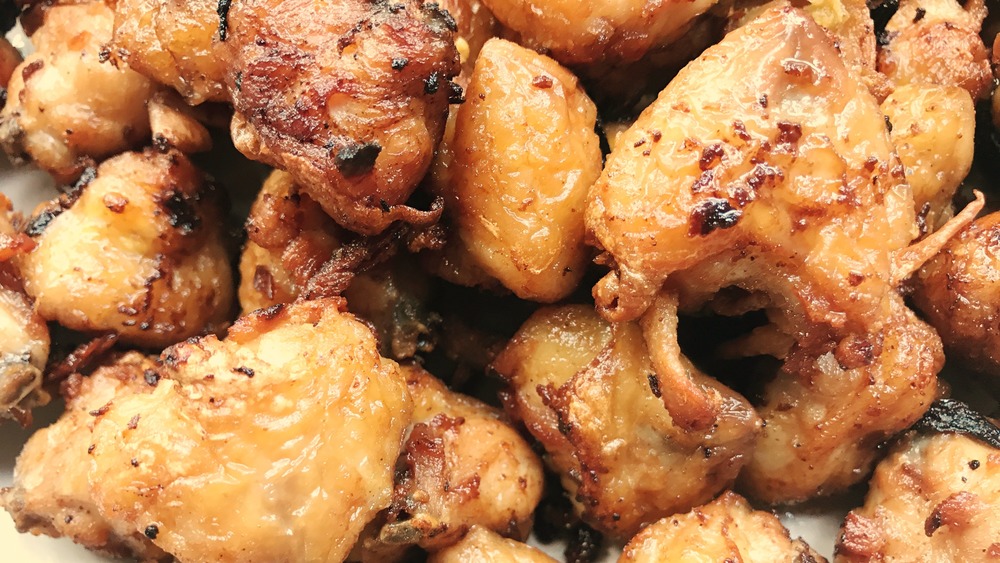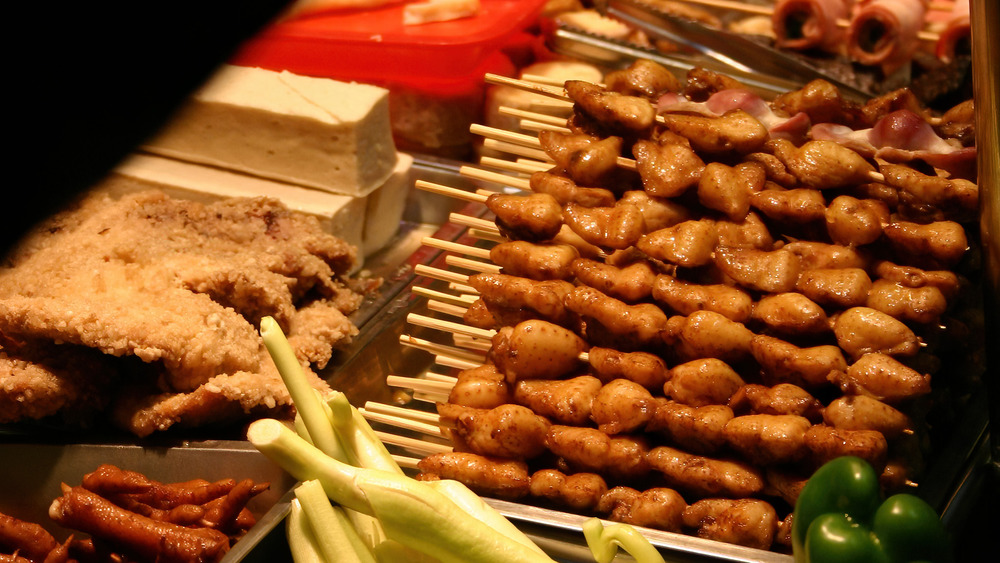This Is Why We Call A Turkey's Tailbone The Pope's Nose
When we carve up a turkey, chicken, or other bird, some of those at the table may favor dark meat, some favor light, and some (not just the kids) may even resort to tussling over who gets a wing or a drumstick. One small bit that some hold in even higher regard, however, is that fleshy little blob right at the end of the bird where its tail feathers were once attached. This piece has a little bit of meat, a good chunk of skin, and a whole lot of fat (according to Smithsonian Magazine, a turkey tailbone gets about 75 percent of its calories from fat).
Yet another thing that some may squabble about is what to call the turkey's tailbone. Some favor the term pope's nose, while others call it a parson's nose instead. In Focus Magazine adds that in North Africa, it goes by the name of Sultan's nose, while The Globe and Mail says it has also been known as a bishop's nose or even a recorder's nose, this last name referring to a type of British judge. What most of us don't know is, why does a bird's butt-bone have such nicknames?
The name was not meant as a compliment
It would seem that perhaps the "pope's nose" nickname may have been the earliest one given, at least as far as we know. The Globe and Mail says this name most likely came into use in the late 17th century when anti-Catholic sentiment was stirred up following the short and not so happy reign of James II. (History tells us that Britain's last Catholic monarch was deposed during the Glorious Revolution of 1688.)
What is less clear is whether it was Catholics or disgruntled Protestants who decided that Protestant clergy were also worthy of having their noses compared to a fowl rump, but the alternative epithet "parson's nose" was apparently in common use by the time Henry Wordsworth Longfellow published his 1839 novel Hyperion. Cookipedia, however, relates an anecdote supposedly dating from 1400 (long before the Reformation) when a carpenter, unhappy with the payment he received (or didn't receive) for his work at St. Mary's Church in Nantwich, carved a choir stall decorated with an image of a bird featuring the clergyman's face complete with his prominent nose on its posterior. The Winsford and Middlewich Guardian has a photo of the 15th-century emoji they call the Nantwich Dodo (a bird not yet extinct at the time this artwork was created).
What to do with the pope's (or parson's) nose
While Cookipedia suggests that the birdie bodily part which more properly goes by the name of pygostyle (meaning "rump pillar") should be discarded prior to cooking, AsiaOne advises doing anything "butt" this. They cite a study from Nutrition And Dietary Studies Of America that found chicken tailbones to be much higher in both iron and calcium than chicken breast, and Eat This Much says that a serving of turkey tail provides 13 grams of protein and 40 mg of calcium. Singapore entertainer and author Abigail Chay says that tailbones are also a traditional folk remedy for bad skin. She says she ate several dozen fried chicken rumps per week after a bad breakup and soon found herself looking and feeling a lot better, so who knows, maybe bird butts can even help cure a broken heart.
While the traditional way to eat them is straight off the roasted turkey, chicken, or other bird, you can sometimes find these body parts sold separately (perhaps in an Asian grocery). YouTuber YaoShan Cowboy suggests deep-frying them with chiles and rice wine, while Soul Food and Southern Cooking posted a recipe for stir-fried turkey tails with veggies. So don't turn up your nose at this tasty tidbit – it seems the pope's nose is not to be sneezed at!


